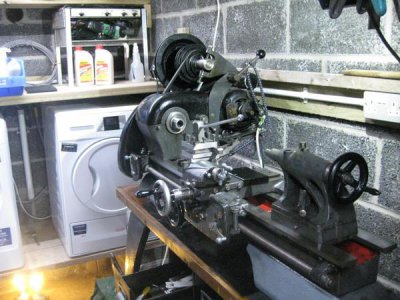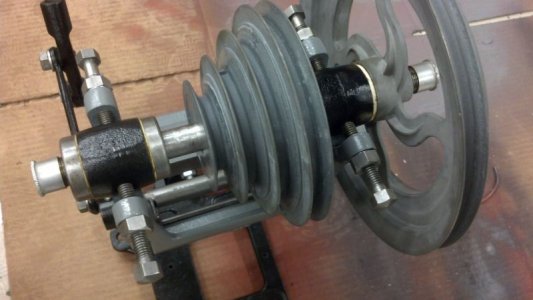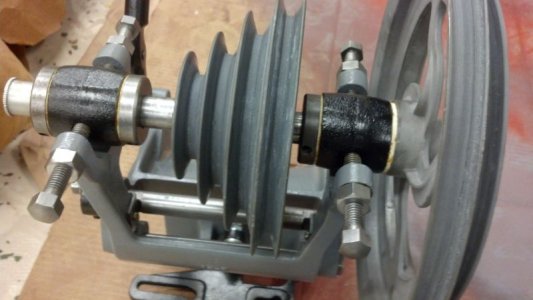- Joined
- Oct 11, 2013
- Messages
- 90
When someone hands you a lemon...
I've been making some slow progress on restoring my 10F Atlas Lathe; when I got it all of the hand wheels were either broken, bent, or replaced with non-standard parts. The machine had been used in a commercial environment...it was relegated to making parts for a newspaper print machine, eventually being replaced with an Atlas 12" lathe.
The broken Zamak parts needed to be replaced (or repaired?) and there were no guidelines on how to do this as far as I could determine. The simple solution was to get a replacement part from Clausing or Ebay at a princely sum, and discard the remnant as unusable.
Here was an example of my problem, a broken balance wheel for the cross-slide:
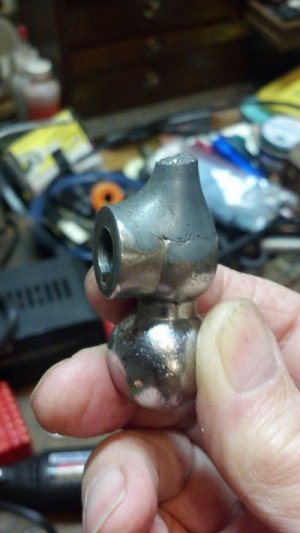
A previous operator (old machinist) had attempted to repair it with a cold weld material, probably similar to JB Weld or Plastic Steel. These products are really not suitable for the dynamic loads associated with the cranking motion on a hand wheel, and are not intended for tension or torsion loads. They are good filler materials and have other specific applications that work well, however.
There was nothing to lose in trying to repair it, so this is what I did. I drilled and tapped the remnant balance wheel, and Loctited in a threaded bolt:
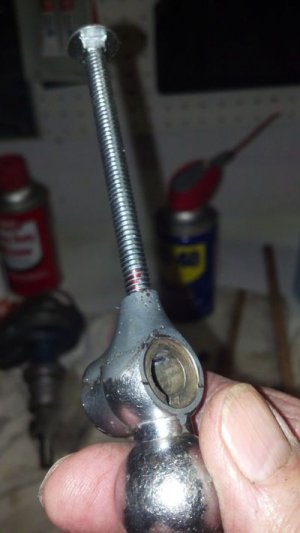
While the Loctite was setting up, I cut off a piece of 1/2" round steel stock and commenced to grinding it to shape (lathe not working yet); then I drilled and tapped the end to fit the bolt threads:
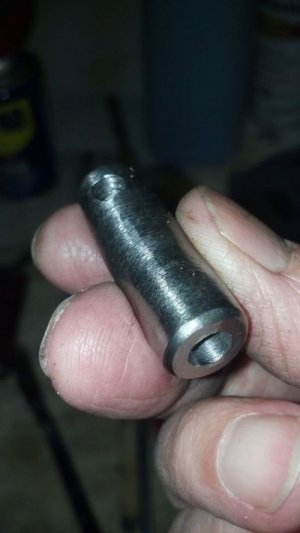
Then I cut off the bolt to suit, and Loctited the finger lever in place:
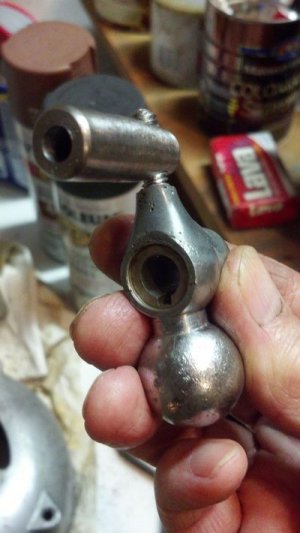
After it set up, I rounded up the JB Weld and used it to fill in the gaps, and provide a stop on either side of the lever to hold it in place; after cleaning & degreasing, the whole shootin' match received several coats of clear lacquer...
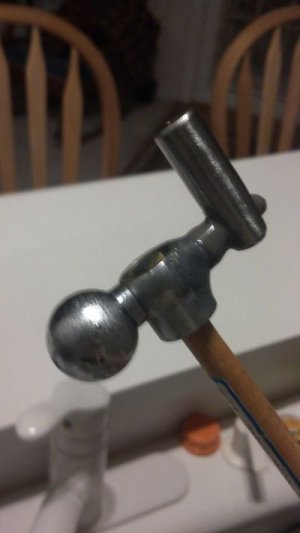
I reinstalled the finished work of art on the cross-slide to test its effectiveness...it works!
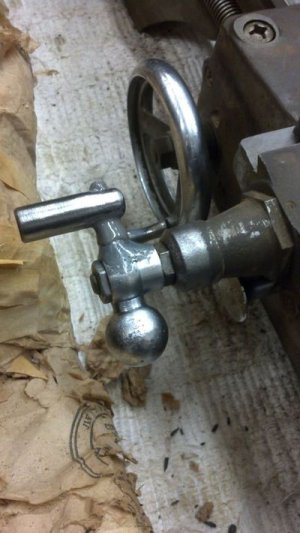
Only time will tell as to whether this type of repair is suitable; but it appears to retain enough of a robust feel that I think it will work out as a definite alternative.
One of the problems I think everyone using these lathes with Zamak parts has experienced, it the tendency of the metal to fail under specific loads. My gut feel is that you can prevent breakage (or extend the life) of these parts by frequently cleaning your machine and not subjecting the part to undue strain from swarf.
Good Luck with your machine!
I've been making some slow progress on restoring my 10F Atlas Lathe; when I got it all of the hand wheels were either broken, bent, or replaced with non-standard parts. The machine had been used in a commercial environment...it was relegated to making parts for a newspaper print machine, eventually being replaced with an Atlas 12" lathe.
The broken Zamak parts needed to be replaced (or repaired?) and there were no guidelines on how to do this as far as I could determine. The simple solution was to get a replacement part from Clausing or Ebay at a princely sum, and discard the remnant as unusable.
Here was an example of my problem, a broken balance wheel for the cross-slide:

A previous operator (old machinist) had attempted to repair it with a cold weld material, probably similar to JB Weld or Plastic Steel. These products are really not suitable for the dynamic loads associated with the cranking motion on a hand wheel, and are not intended for tension or torsion loads. They are good filler materials and have other specific applications that work well, however.
There was nothing to lose in trying to repair it, so this is what I did. I drilled and tapped the remnant balance wheel, and Loctited in a threaded bolt:

While the Loctite was setting up, I cut off a piece of 1/2" round steel stock and commenced to grinding it to shape (lathe not working yet); then I drilled and tapped the end to fit the bolt threads:

Then I cut off the bolt to suit, and Loctited the finger lever in place:

After it set up, I rounded up the JB Weld and used it to fill in the gaps, and provide a stop on either side of the lever to hold it in place; after cleaning & degreasing, the whole shootin' match received several coats of clear lacquer...

I reinstalled the finished work of art on the cross-slide to test its effectiveness...it works!

Only time will tell as to whether this type of repair is suitable; but it appears to retain enough of a robust feel that I think it will work out as a definite alternative.
One of the problems I think everyone using these lathes with Zamak parts has experienced, it the tendency of the metal to fail under specific loads. My gut feel is that you can prevent breakage (or extend the life) of these parts by frequently cleaning your machine and not subjecting the part to undue strain from swarf.
Good Luck with your machine!

